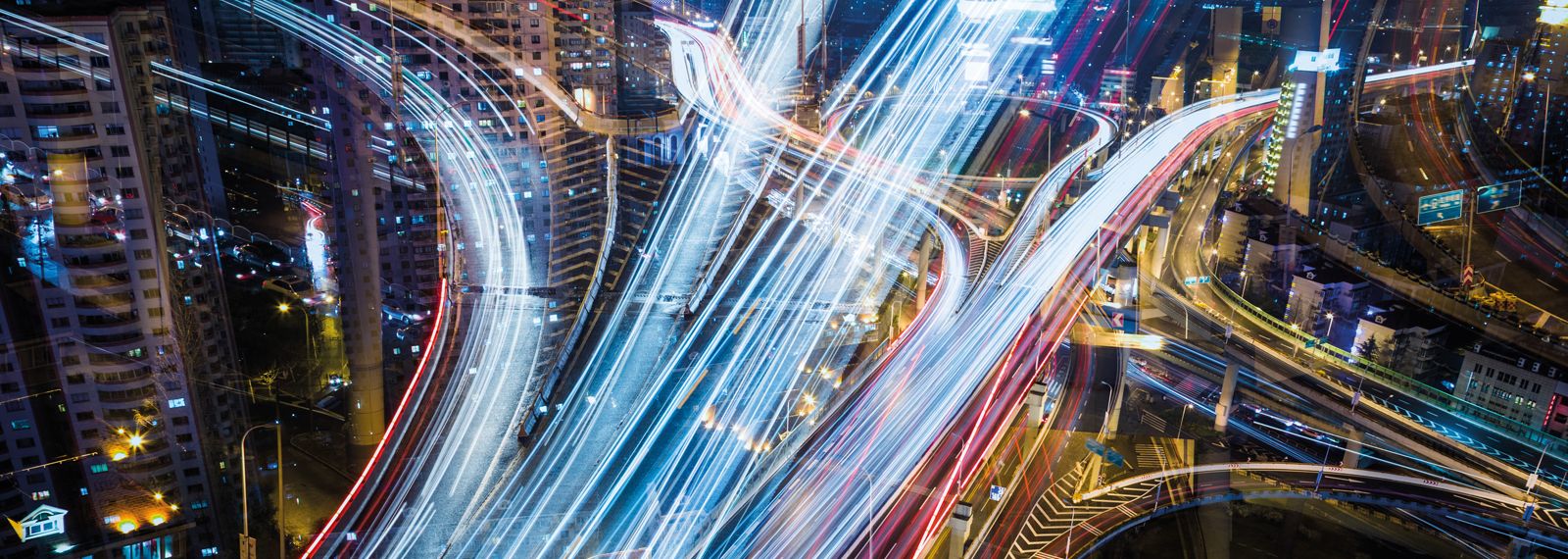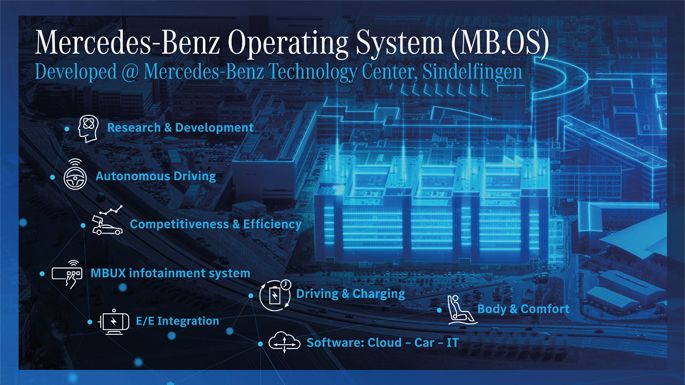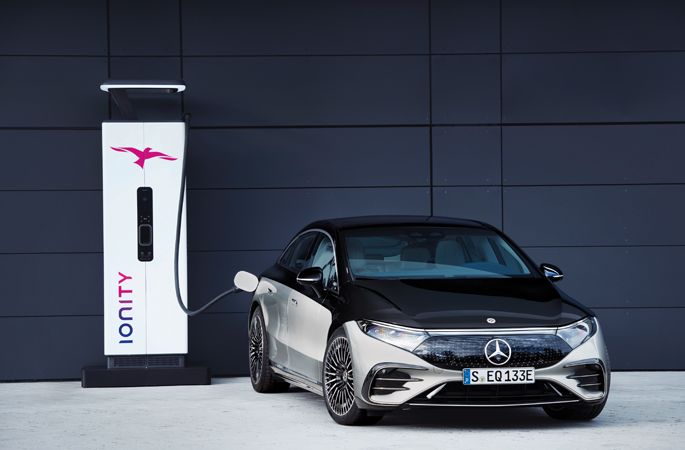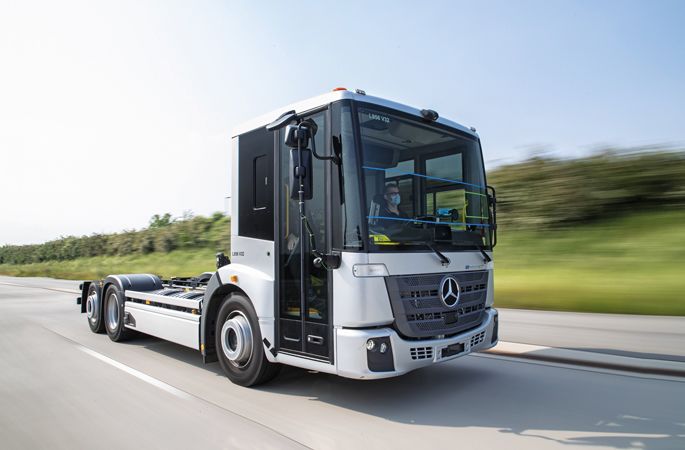
Smart Mobility Meets Sustainability
In this interview developed in partnership with CEO Ed Frank of Axis Innovation, Chairman of Daimler AG and Head of Mercedes-Benz Ola Källenius discusses the transformation and opportunities facing the automobile industry. From new forays into software-hardware integration, new expressions of globalization, and a wide-ranging commitment to sustainability, Källenius helps us appreciate how one of the oldest brands is transforming not just itself, but a shifting industry.
Coller Venture Review —
Let’s begin with the qualitative transformation that is clearly going on in the auto industry. How would you suggest we think about it, and what do you think the core changes are likely to be?
Ola Källenius —
To start with, the auto industry will not look the same 10 years from now. But this is a transformation that has already been going on for a few years.
The two major tends driving transformation are digitization and decarbonization. In terms of digitization, this refers to digitization of the product – making the car an embedded thing in the Internet of Things. This also includes the digitization of how we make the product – how we change the way we work in our company.
As for transformation related to decarbonization, there are no two ways about it, it is part of the core of our strategy to define what the future of sustainable mobility looks like.
As we think about this, let us keep in mind that the connected car is not something that’s just happened recently. More than 10 years ago, engineers were thinking about how we can introduce modern technologies into a vehicle and how can we make the vehicle something substantively more than a rolling office.
CVR —
What about the functionality of the software that supports this transformation?
Källenius —
Clearly, software is key and mastering the software stack is essential. As testament to this, we have increased our level of vertical integration. We have specifically focused increasingly on telematics, i.e., the user interface to the customer. And even though we are a “car” company, it is finally important to note that we have taken software development in-house. This includes writing software for autonomous driving assistance systems.
We have increased our level of vertical integration. We have specifically focused increasingly on telematics, i.e., the user interface to the customer. It is important
to note that we have taken software development in-house – this includes
writing software for autonomous driving assistance systems
CVR —
Let’s talk about autonomous driving assistance systems. Where does it fit within the grander scheme?
Källenius —
Autonomous driving assistance systems are not just going to make driving a lot safer. Ultimately, they are going to take the driver out of the picture. Electrification efficiency is also going to be the name of the game, – energy is even more precious in an electric vehicle than in combustion-based vehicles, so we know that relevant innovations like battery management systems will be crucial for competitiveness.
Mercedes-Benz Operating System (MB.OS) developed @ Mercedes-Benz Technology Center, Sindelfingen.

CVR —
I’ve read about so-called “level three” systems. Can you explain this please?
Källenius —
As far as Mercedes is concerned, we are moving to production at scale at a level three system. Why is it such a big deal? It is because if you move from level two to level three, the liability moves from the human to the computer. This means the company becomes fully responsible for everything that happens – because the car is driving. It is not just a technological challenge. We have to consider it also from a legal and product liability point of view. It changes everything.
Related to this is the first full-level parking system. This then moves to the combination between technology in the car and technology in the infrastructure. This is something we are developing together with Bosch. We have pilots running where you can literally step out of the vehicle, into the parking garage, and the vehicle parks itself. The car literally can guide itself through the parking garage infrastructure. This is a convenience feature that I foresee may be become standard operating procedure one day.
CVR —
It’s been written elsewhere that you are building a “supercomputer on wheels.” Can you explain please?
Källenius —
If you take a holistic view of what this means, the brain and the central nervous system of the car are completely linked…. This includes the software stack I mentioned, literally going to go through the whole car ultimately to infotainment and a direct link with the customer. Our customer interface includes a Mercedes “me ID” that you log into when you log into your car – very much the logic of a smartphone.

CVR —
How does globalization fit, from the perspective of your software engineering future?
Källenius —
As you know, we are significantly increasing our resources in software engineering. In fact, our team in Tel Aviv is playing a crucial role in this – they are now like an integral part of our overall engineering organization.
Our technology team in Bangalore is also large, the largest outside Germany. They are also addressing vehicle engineering. And every time I go there, I’m just flabbergasted by the speed of development and the enthusiasm that we see there to contribute to our technical future.
We are also investing in startups, including in Berlin. Why Berlin? Berlin is a little bit like Tel Aviv in terms of a magnet for young talent. And when you walk into the office in Berlin, you hear I don’t know how many languages. All in all, I believe there are individuals from 30 nations working there. English is the standard language in our Berlin office.
Finally, I will just add that, from a marketing perspective, our biggest market is in China of course.
CVR —
How do joint ventures and strategic partnerships figure into your plans for continued globalization?
Källenius —
As one example, we have made a strategic partnership with Nvidia. In our assessment, they have the highest computing standards relative to the next generation of driving assistance systems. But clearly it’s not the only partnership. We have several. Some of them we make public, some of them we keep to ourselves. And the message here is co-innovation. We’re open minded and we’re always looking for people that share our vision of pioneering innovation. So the shop is open for business.
CVR —
Can you enlighten us as to the future of electric mobility more generally?
Källenius —
We are connected today to more than 500,000 public charging points. No matter what trip you take, the computer will calculate the smartest trip for you where you should charge. There are also artificial intelligence systems being developed that will be able to make suggestions based on the behavior of the driver. These are things that are already reality today but will play an even bigger role tomorrow.
CVR —
You mentioned decarbonization earlier. What specifically are your views on the Paris Climate Agreement?
Källenius —
About two years ago, we had made a very clear strategic decision. Humanity needs to solve the CO₂ problem. We signed up to the Paris Climate Agreement, not because we have to, but because we want to.
We know that this is going to be a gigantic task for humanity to solve to eventually go to net zero. It is engineering problem but it is also multi-dimensional. And I think maybe the financial aspects of this and how we transform our industrial footprint more broadly are perhaps even bigger challenges than, let’s say, just the engineering challenge.
But we’re committed to it. And it’s so much more than just looking at making an electric car, that would be too one dimensional. We know we have to look at the upstream and downstream supply chain, take a 360-degree approach towards carbon neutrality. We can see that there is momentum, there’s very strong political momentum in Europe. One can also see that the ambition is high in the U.S., and that China too has made it part of its strategic goal to go carbon neutral and push so-called “new energy” vehicles.
About two years ago, we had made a very clear strategic decision. Humanity needs
to solve the CO2 problem. We signed up to the Paris Climate Agreement, not because
we have to, but because we want to
CVR —
Does decarbonization apply just to your passenger cars? And what about fuel cells, how does this fit?
Källenius —
It’s not just a passenger car thing – it is every form of mobility, from a 40-ton truck all the way down to a small, two-seater city car. Whether the trucking people or the bus people, they are all working on the exact same thing.
And while the electric battery is the name of the game for shorter to medium distances, we’re also putting another horse into the race for the 40-ton truck that needs to go maybe up to 1000 kilometers a day. And this is where the fuel cell could come into its own and be the technology of choice. And that’s why we have kicked off a major project on fuel cells for heavy trucks, together with one of our competitors. We’re hopeful because the trucking industry is very sensitive to cost, and this is a business that could switch over relatively quickly once regulation and variable costs set in. We are excited that we are in a leading position here, but not something where we should rest on our laurels by any means.
I also want to add that we are looking not just in terms of reducing CO₂ in the vehicles themselves, we are also looking at waste management, beginning with our newest factory.

CVR —
Can you talk to us a little about your particular strategic vision?
Källenius —
There is a master strategy behind what’s going on at Mercedes at the moment. We’re now in a paradigm shift into a new philosophy where we believe we have to be the architect of the master software stack. Of course, it still needs to be open and speak to everything else out there and include all elements of the ecosystem we are used to from the smartphone world.
We stay focused on believing in Mercedes as a potential winner in this transformation. We work in an interactive way with big and small companies alike. But you can’t take anything for granted. We know that when there is an industry that’s going through transformation or disruption, new players come in. Some of the incumbents are successful, and some struggle – so we will have an upheaval in the auto industry in the next 10 years or more. We intend to tackle the challenge.
CVR —
With all the demands of competition, changing technology, and changing imperative – how do you keep your spirit of innovation alive?
Källenius —
The customer expects perfection from somebody with our brand promise, and it can lead to being more conservative. And we constantly have this balancing act between perfection, but also doing crazy things that are really out there. And so we try to keep that balance.
We don’t have time today to talk about all of those things. But we literally write down all that you could possibly be done with the vehicle. And then as we go through vehicle engineering, and we select the winners, the
ones that we think are going to have the most value for the customer – and also create the most value for us. We seek quality and try to not be too conservative. We got to be a brand that delivers on this pioneering spirit from our founding fathers. And I think most of the time, we get that balance right.
The customer expects perfection from somebody with our brand promise, and it can lead to being more conservative. And we constantly have this balancing act between perfection, but also doing crazy things that are really out there. And so we try to keep that balance. And I think most of the time, we get that balance right.
CVR —
With all this progress, what is keeping you up at night?
Källenius —
Well, as I said, I think the whole topic of CO₂ should keep us all awake. It’s one of the defining tasks that we have ahead of us in the next decade. And I believe if everybody pulls together, it’s a problem that can be solved. While we have made a plan, we now have to execute that plan. And that’s going to be a lot of hard work.
I am also hugely excited about the whole notion of how everything gets connected with everything else from the vehicle as its own island to the vehicle being a smart thing in the internet of things. It’s going to improve safety, it’s going to improve traffic flows, it’s going to make your trip so much more pleasurable. We are truly at the center of huge innovation and new expressions of software-hardware integration.
